Arrive at Kolkata International airport terminal. After clearing the immigration and customs formalities you will be met by our representative in the arrival hall who will escort you to a waiting vehicle for a transfer to your hotel.
Kolkata (formally Calcutta), situated on the eastern bank of Hoogly River, was once the capital of British India, and is now the capital of West Bengal. It is the gateway to eastern India. Conceived in 1686 it has had a turbulent history. Now the largest city in India it displays glaring contrasts: a curious blend of the old and the new, wealth and poverty, partly feudal, partly born out of growing urbanisation, partly un-definable. It is a medley of east and west, of a European city grafted on the Asian landscape that gives Kolkata its bewildering charm, confusion and excitement.
Being just about 300 years old, Kolkata has few great historical monuments.
Overnight in Kolkata

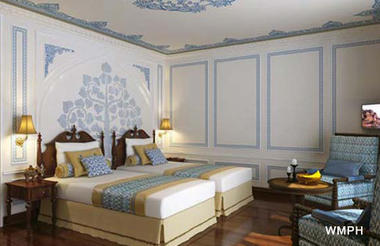
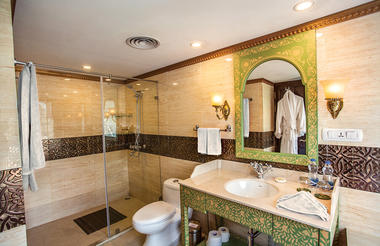
Breakfast at hotel.
Today enjoy full day City tour of Kolkata includes Dalhousie Square, Flower Market, Howrah Bridge, St. Paul’s Cathedral, Indian Museum and the Victoria Memorial,
Dalhousie Square was the administrative centre for British India. On one side is the General Post Office, a majestic specimen of Edwardian architecture. It is built on the site of the original Fort William. On the other side stands the “Writers Building”, a massive Gothic structure dating from 1880. It remains a government building, today the centre of the West Bengal Government administration.
Flower Market: This famous flower market is set at the foot of the massive Howrah Bridge. The garlands of roses and marigolds, the smells, the voices and the intense activity make it a fascinating and totally unique place.
Howrah Bridge (Rabindra Setu): A miracle of engineering skill, the Howrah Bridge is a huge cantilever bridge supported by two piers 270 ft. high from road level. The span between the piers is 1,500 ft while the total distance between the two sheet anchors is 2,115 ft. There are eight traffic lanes and two footpaths on the 71 ft. wide bridge.
St. Paul’s Cathedral: Constructed between 1839 and 1847 in Gothic style with stained glass windows and two Florentine frescoes, the cathedral is the largest in the city and next to the Birla Planetarium. It was consecrated in 1874.
Indian Museum: The history of the origin and the growth of the Indian Museum is one of the remarkable events towards the development of heritage and culture of India. Founded in 1814 at the cradle of the Asiatic Society of Bengal (at the present building of the Asiatic Society, 1 Park Street, Kolkata), Indian Museum is the earliest and the largest multipurpose Museum not only in the Indian subcontinent but also in the Asia-Pacific region of the world (Closed on Mondays & National Holidays)
Victoria Memorial: Built between 1906 and 1921 on the lines of the Taj Mahal, in memory of Queen Victoria. Topped with a moving angel, this memorial faces the Kolkata Maidan, which houses paintings, manuscripts and other objects of historic value in its Museum and Art Gallery. Two regular sound and light shows are held in the evening. (Closed on Mondays & National Holidays)
Overnight in Kolkata



After breakfast, transfer to the airport for your flight to Guwahati in Assam
From Guwahati airport, embark on a short sightseeing tour of the city of Guwahati.
Drive up Nilachal Hill to see the holy Kamakhya temple. With its tantric rites and animal sacrifice, the more squeamish among us may prefer to content themselves with the exteriors.
Visit the poignant Commonwealth War Graves cemetery which was started during the Second World War for burials from the several military hospitals posted in the area. Later, other graves were brought in by the Army Graves Service. There was fierce fighting in NE India between the invading Japanese forces and the Indian army led by British officers. Manipur and Nagaland were occupied. Several important battles were fought on Indian soil including Red Hill and Kohima. The Battle of Imphal-Kohima was voted as Britain’s greatest battle by the National Army Museum in London, edging out Waterloo and D-Day, two iconic events that we are more familiar with, even in India.
After the cemetery visit, you will embark on your cruise vessel. We set sail and cruise for about an hour and a half upstream to Kurua on the north bank.


Cruise Day 2
The day is spent mostly cruising upstream with jungle-covered hills rising on either side, often battling against strong currents.
There is time to pause and visit the north bank village of Khirakata, with its lush green fields of vegetables and corn.
Cruise Day 3
Leaving the hills behind, we enjoy our first taste of the wilderness experience, with sand banks resembling icebergs on either side.
We visit Tullugaon, another bankside village with large sugarcane plantations. We shall see weavers at work in their homes, as well as the production of jaggery out of sugar cane juice.
We moor for the night in a lunar landscape of sand islands with hopefully the Himalayas in view, providing a contrasting backdrop in the distance.
Cruise Day 4
Cruise on to reach Tezpur where, after lunch, we will visit the 6th century Da Parbatia temple ruins with its beautifully carved portal. Later, explore the town by cycle rickshaw, stopping at Cole Park with its medieval stone carvings saved from sites all over the region, and passing the bungalow once lived in by Alexander Bruce, a pioneer of the tea industry.
Our ship will be waiting at the town’s waterfront for us to reboard.
Cruise Day 5
After an early breakfast, drive for some two hours to the Nameri National Park at the foot of the blue hills of Arunachal Pradesh, the old North East Frontier Agency.
Here, we take a float trip in a raft of around two hours down the Jia-Bhoreli River through the park.
There are excellent bird-watching opportunities here (look out for the great hornbills) and, perhaps, the chance of sighting wild elephants.
After lunch, take a village walk before returning to the ship.
After breakfast we leave our cruise ship.
Transfer to Diphlu Lodge
Operating successfully since 2008, the Diphlu River Lodge is the ideal destination for those seeking a unique communion with nature. Located on the banks of the Diphlu River and overlooking the Kaziranga National Park, the Lodge melds unparalleled comfort and service with the excitement of a wilderness experience.
Afternoon game drive in the park.
Dinner in the hotel
Overnight in Kaziranga
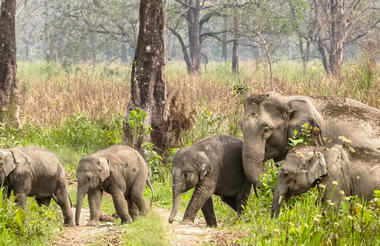
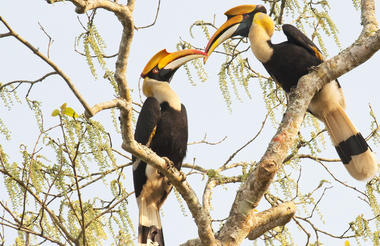
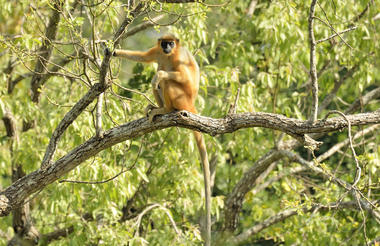
Early morning park visit either by elephant or 4x4 jeeps (Gypsy). Kaziranga National Park is a UNESCO World Heritage site.
The Park contains about 15 species of India's threatened mammals and harbours the world's largest population of Indian rhinoceros and Indian elephant. Other mammals include capped langur, hoolock gibbon, tiger, leopard, sloth bear, Ganges dolphin, otter, wild boar, water buffalo, gaur, sambar, swamp deer, hog deer and Barking deer.
The avifauna of the Park region comprises over 400 species.The numerous water bodies within the Park are rich reservoirs of food and thousands of migratory birds, representing over 100 species, visit the Park seasonally from as far afield as Siberia. There is a grey pelican rookery near Kaziranga Village. Other birds of interest include black-necked stork, lesser adjutant stork, Pallas's fish eagle, grey-headed fish eagle, Bengal florican, swamp partridge, grey peacock-pheasant, great pied hornbill, green imperial pigeon, silver-breasted broadbill and Jerdon's bushchat.
Afternoon park visit.



After breakfast, checkout of the hotel.
We will either drive or fly to Kohima.



After breakfast we will visit the Hornbill Festival
The Hornbill Festival
This annual festival has been held for nearly 20 years and showcases the entire Naga culture. It is a cultural extravaganza focused on reviving, protecting and preserving the local Naga cultures. The seven-day event starts at the beginning of December in the heritage village of Kisama, about 12 kms from Kohima.
Each Naga tribe is unique in character with its own distinct customs, language and dress. Common to all Nagas is the English language and the Christian religion. All the sixteen tribes of Nagaland take part in this festival but so do indigenous representatives from the the remaining seven North-Eastern Indian states.. Most of the population of Nagaland depends on agriculture and therefore most of their festivals revolve around agriculture. They consider their festivals sacred and so participation in these festivals is essential. People enjoy the colourful performances, crafts, sports, food fairs, games and ceremonies. Traditional arts which include paintings, wood carvings, and sculptures are also on display.
Visitors to the Hornbill Festival get a closer understanding of the culture and people of the North East. Such activities as archery, wrestling and dancing are available, and it is a rare opportunity to experience all the foods, songs, and customs of the eight sisters of India.



Today is another opportunity to spend a full day at the Hornbill Festival
Breakfast and dinner in the hotel



After breakfast, drive to the airport at Dimapur (2 hours) for a flight to Kolkata.
From Kolkata airport a transfer will be available to the Rajbari Bawali
The Rajbari Bawali is a restored palace, set in sprawling grounds, that belonged to a family that owned substantial landholdings during the British Raj. It is in a quiet rural location but the bustling city of Kolkata is available if needed, only an hour away.
Activities at the hotel include culinary demonstrations, village walks or bike riding and a swimming pool.
Remainder of the day at leisure
Dinner in the hotel



A day of leisure.
There will be the possibility of visiting Kolkata again or to enjoy local activities.
Dinner in the hotel



After breakfast, you will be taken to the Kolkata International Airport for your return flight to Australia.






